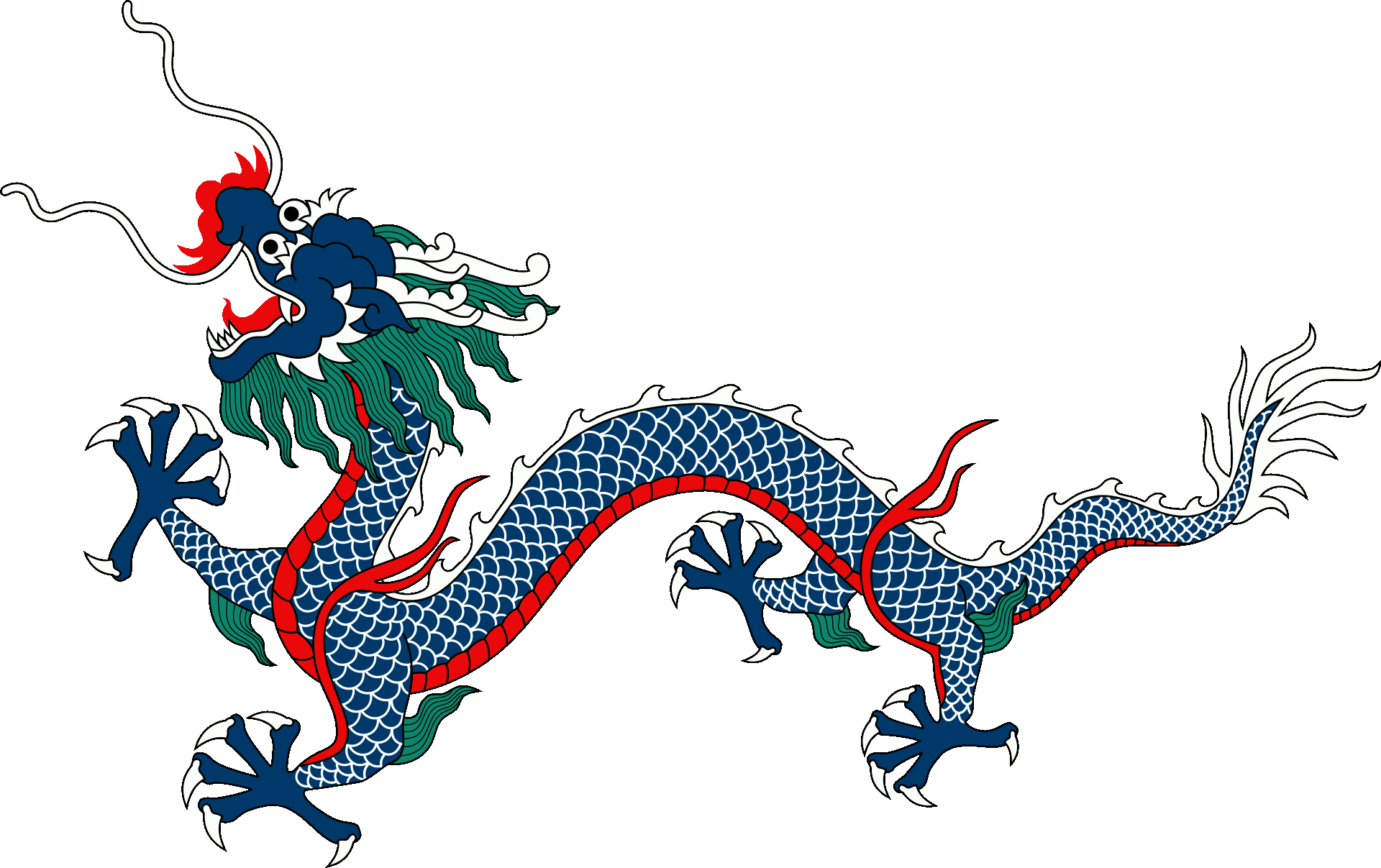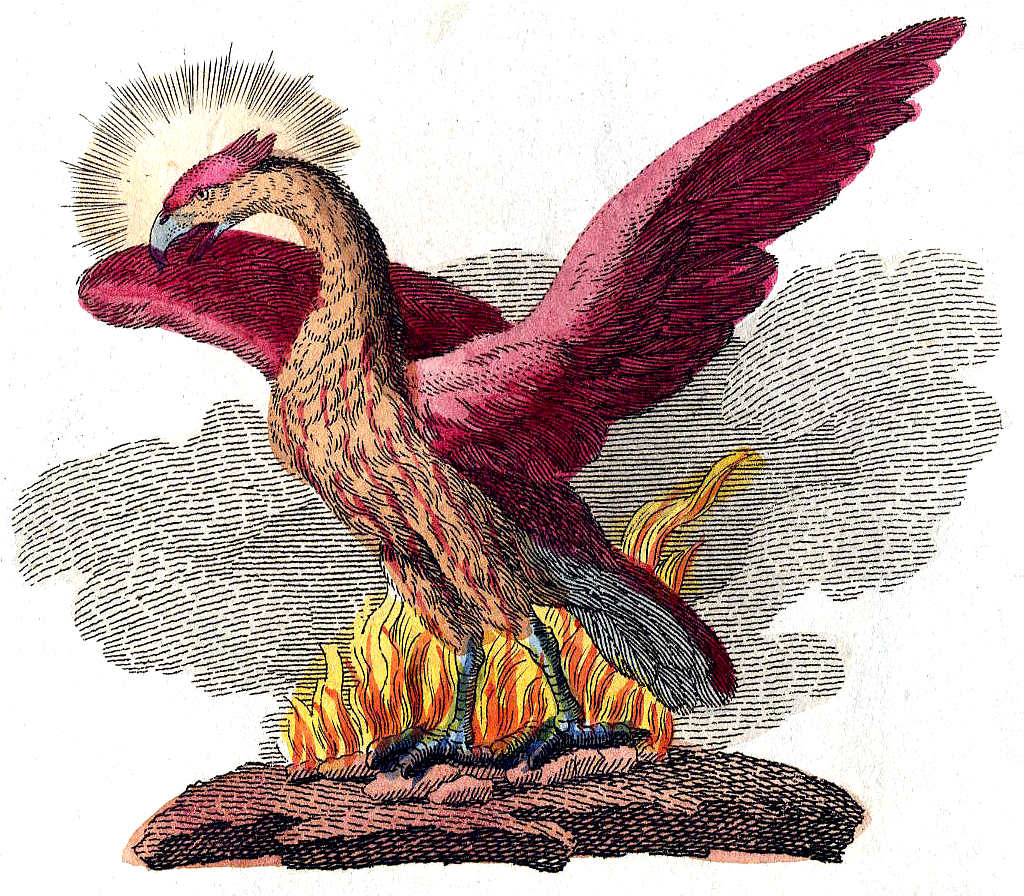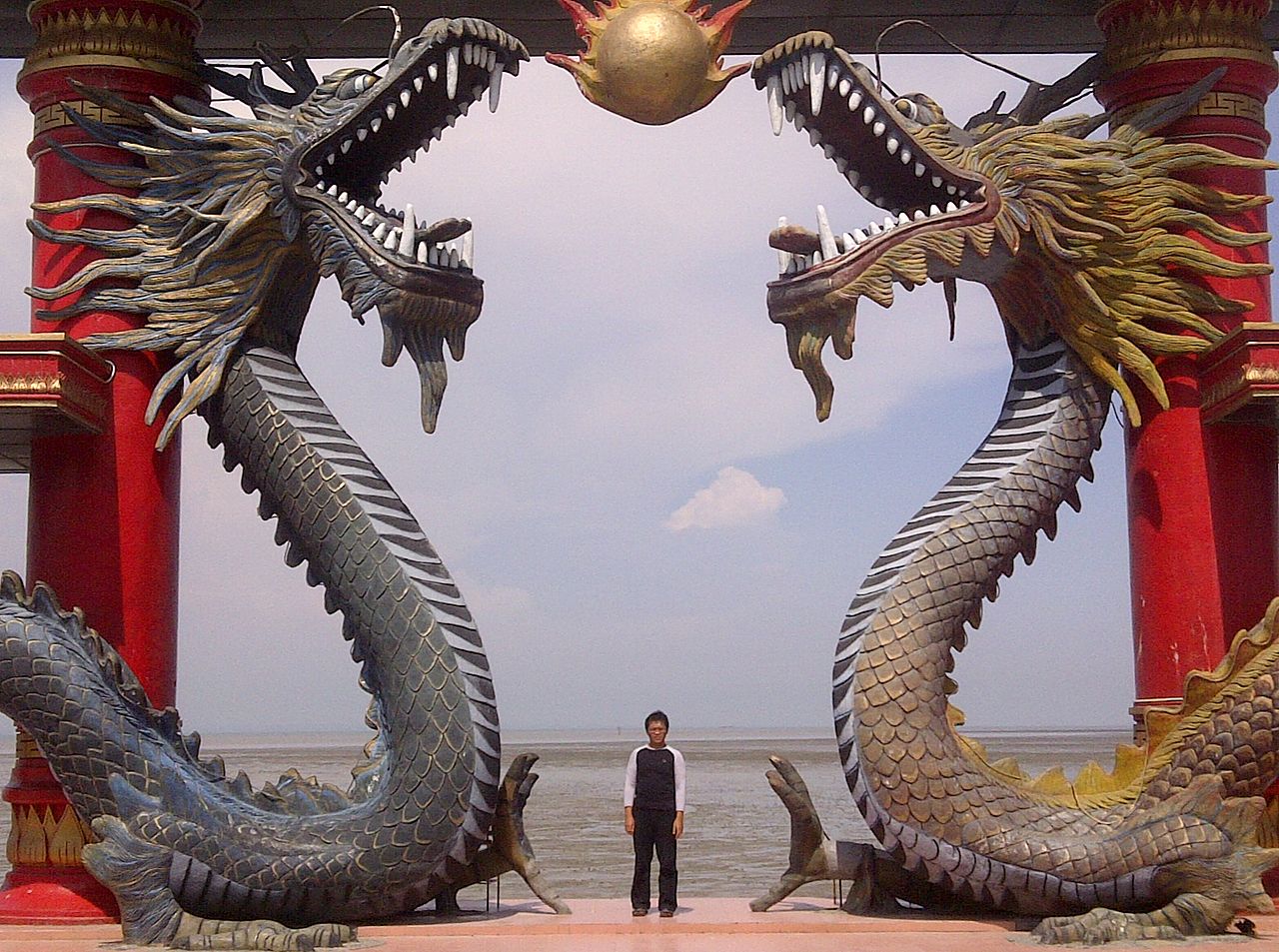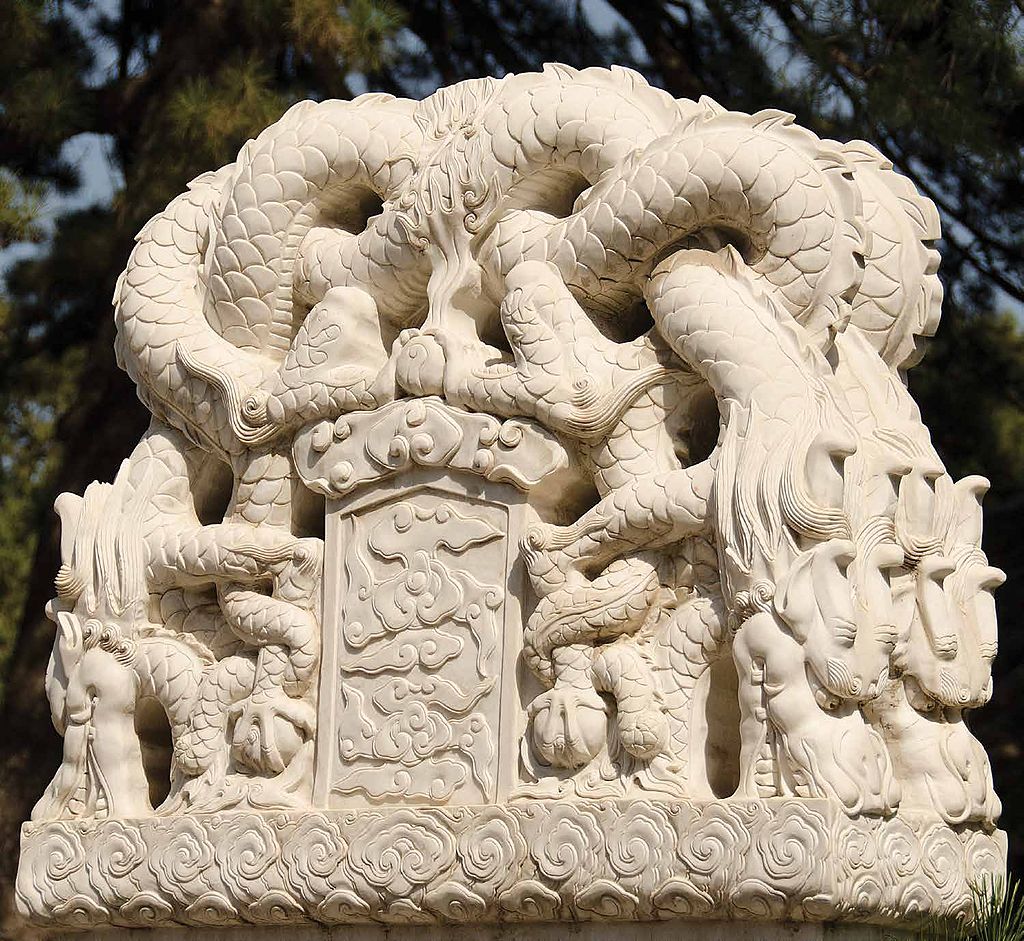|

In
this original, fictional, John Storm adventure the Red Dragon leader, General
Reza Shah, names his cell after the mythological winged serpents to
signify power and rebirth.
The Red Dragon is a powerful symbol, particularly in
China, but it also has interesting connections to other parts of Asia.
CHINA
Lucky and Powerful: Here, the Red Dragon (often called "Lung") is a revered creature. It represents good fortune, power, and control over water, which is vital for agriculture. Red itself is China's luckiest color, so the combination is especially auspicious.
Cultural Icon: The Red Dragon is everywhere in Chinese culture, from art and festivals (like the famous dragon dances) to national identity. People even see themselves as "descendants of the dragon."
OTHER
ASIAN NATIONS
Shared Symbolism: Dragons are prevalent in other Asian cultures too, often sharing some positive connotations with the Chinese Red Dragon. They might symbolize power, wisdom, or good luck.
Variations: There are differences though. For example, some cultures depict dragons as more monstrous, while others have multiple-headed versions.
The Dominant Dragon: The Red Dragon, often called "Long" (龙), is the most prominent dragon figure in China [Chinese Dragon - Meaning, Colors Symbolism, Mythology, Types]. It's depicted as a serpentine creature with four legs, often associated with
water and good fortune.
Lucky Color: Red itself is China's luckiest color, so a Red Dragon combines auspicious power with good fortune. It's a popular image for festivals and celebrations, appearing in decorations and even dragon dances [Chinese Dragon: Meaning, Colors Symbolism, Mythology, Types].
National Symbol: China is sometimes referred to as the "Red Dragon" itself, reflecting the deep connection between the creature and the nation's identity [Why Dragons Are a Big Deal in Chinese Culture | TIME].
While the Red Dragon isn't as universally present elsewhere in Asia, dragons are prominent mythical creatures in many cultures:
Connection to Ancient Persia: Iran was formerly known as Persia. In some mythological traditions of the region, there are dragon-like creatures.
The codename chosen by General Shah
may be a sublte link by Iranian leader to connect to his national or cultural heritage, even if the Red Dragon itself isn't necessarily an exact match.
While the Red Dragon is more prominent in China, dragons are also present in Iranian mythology. The Zahhak is a three-headed dragon defeated by the hero
Ferdowsi. Reza Shah may see himself defeating three heads of capitalism.
Japan: Dragons (Ryujin) are often associated with water and can be benevolent or destructive. They are typically depicted as serpentine with multiple limbs and no wings [Japan Guide [Ryujin]]
Korea: Korean dragons (Yong) are similar to Chinese dragons and also symbolize power, good luck, and protection.
Vietnam: The Vietnamese Dragon (Con Rồng) is also serpentine but with a strong emphasis on scales and sometimes has a single horn. It represents the emperor and embodies wisdom and power.
The dragon has been used as a state symbol in Vietnam. During the Nguyễn dynasty, the dragon was featured on the imperial standards. It was also featured on the coats of arms of the State of Vietnam, and later South Vietnam.
The use of the character in describing common events shows its importance in many parts of Chinese culture. For example, this character is found in the idiom Liyú tiáo lóng mén, meaning ''A carp has jumped the dragon's gate.'' This idiom is used when someone successfully passes the difficult exam to become a civil servant.
While Western culture features stories of heroes slaying villainous dragons, Chinese culture incorporates dragons in a more positive manner, as being magnanimous and often very
knowledgeable. Dragons in Chinese culture are often associated with business prosperity, bountiful harvests, good health, and protection. Unlike their European counterparts, not many Chinese dragons breathe fire, rather they are more often associated with water.
The Dragon is one of the 12 Chinese zodiac animals, with its own astrological personality and symbolism. Apart from that, in Chinese culture, dragons symbolize imperial power, good fortune, power over weather and
water, and a pioneering spirit.
During China's imperial dynasties, emperors used the dragon as a symbol of their imperial power and authority. Dragon emblems can be found in carvings on the stairs, walkways, furniture, and clothes of the imperial palace. It was against the law for common people to use things related to dragons in imperial times.
WEATHER & WATER
In Chinese legend, the Dragon Kings were believed to be the rulers of weather and
water, such as rainfall, waterfalls, rivers, and seas. Four Dragon Kings each controlled a sea of China: 'East Sea' (the
East China
Sea), 'South Sea' (the South China
Sea), 'West Sea' (Qinghai Lake and lakes beyond), and 'North Sea' (Lake Baikal). The four Dragon Kings were believed to be the dispensers of rain and wind.
In many Chinese villages, there are still some temples or shrines to worship the Dragon Kings to seek their blessings of good weather for harvests and all year round. In pre-modern times, local people offered sacrifices to appease the Dragon Kings to stop flooding or droughts.
CHINESE ANCESTORS
It was said that thousands of years ago, Yandi (a legendary tribal leader) was born through his mother's telepathic interaction with a mighty dragon. With the help of the dragon and allied with Huangdi (a legendary tribal leader and, by some accounts, the grandson of a dragon), they opened the prelude to Chinese civilization. So, "emperors" Yandi and Huangdi were the ancestors of the
Chinese people. It is said that the two emperors were immortalized as dragons before they ascended to heaven.
As time went by, Chinese people began to refer to themselves as 'the descendants of Yandi and Huangdi', as well as 'descendants of dragons'.

NAMES OF NINE CHINESE DRAGONS
- Bixi (赑屃
Bìxì /bee-sshee/) — eldest, turtle-shaped with sharp teeth, fond of carrying heavy objects; often on graves/monuments
- Qiuniu (囚牛
Qiúniú /chyoh-nyoh/) — yellow scaly dragon, likes and excels in music; often adorns musical instruments
- Yazi (睚眦
Yázì /yaa-dzrr/) — snake belly and leopard head, keen on fighting/killing; often decorates sword grips
- Chaofeng (嘲风
Cháofēng /chaoww-fnng/) — instinctively adventurous; often adorns palace roof ridges
- Pulao (蒲牢
Púláo /poo-laoww/) — known for loud crying; often on bell handles
- Chiwen (螭吻
chīwěn /chrr-wnn/) — lives in the sea, harsh-voiced, delights in devouring creatures; often on palace ridgepole ends
- Bi'an (狴犴
Bì'àn /bee-an/) — likes lawsuits, often stands by jail gates
- Suanni (狻猊
Suānní /swann-nee/) — lion-shaped, delights in sitting cross-legged and smelling incense; often on Buddhist temple incense burners and seats
- Fuxi (负屃
Fùxì /foo-sshee/) — most Chinese dragon-like; often on stone tablets
FILMS
ABOUT DRAGONS
1. How to Train your Dragon (2010)
An endlessly charming and heartwarming dragon tale, How to Train your Dragon is an unexpectedly clever and enjoyable animated movie that combines coming-of-age with fantasy in a great way. A young, aspiring dragonslayer named Hiccup (Jay Baruchel) happens upon an extremely rare type of dragon never seen by human eyes, resulting in an unlikely friendship that could change the entire lifestyle of the Viking-era dragon hunters. As the best dragon movie on our list, it is chock-full of many different dragon types as well as explanations and lore-diving for each one. Other than being a great dragon movie, this is also just a great movie in general, adding to the many top-tier animated titles we’ve been blessed with over the years.
2. Dragonheart (1996)
One of the more heartfelt – albeit corny – movies on this list, Dragonheart features another talented cast of characters that turns a expectedly cheesy 90s movie into a better-than-expected dragon movie. A dragonslaying knight named Bowen (Dennis Quaid) is forced to team up with the last remaining dragon to defeat an evil king, one who was once Bowen's apprentice. Unlike other dragon tales, this dragon (voiced by Sean Connery) is much more sophisticated and patient, only causing damage to property, livestock, or other dragonslayers by accident, necessity, or self-defense. There's also a pretty endearing chemistry between Bowen and his new friend Draco, taking on an almost buddy-cop energy that brings about some charming jests.
3. Reign of Fire (2002)
Likely the best action movie on our list today, Reign of Fire takes the dragon movie concept to a very modern setting in an exciting and sometimes terrifying way. Found accidentally in a very deep mine in 2020 England, a dragon emerges and immediately scorches the earth, beginning a new era of predator and prey. Starring Christian Bale, Matthew McConaughey, Izabella Scorupco, and Gerard Butler, the acting is great, the concept is original, and the effects are appropriate for its time making it an exceptional dragon movie.
4. The Hobbit: The Desolation of Smaug (2013)
In the second installment of The Hobbit trilogy, The Hobbit: The Desolation of Smaug is a wonderful adventure set in Tolkein’s Middle Earth that expands on the cinematic universe with gusto. Continuing on their three-movie journey, Bilbo (Martin Freeman) and his traveling party of Dwarves must now penetrate the Lonely Mountain to take back Erebor from the wicked dragon Smaug. Unique to this list, this is the only movie that actually has the name of the dragon in the title. Smaug is also exactly what one might expect from a dragon: greedy, clever, curious, and territorial.
5. Dungeons & Dragons: Honor Among Thieves (2023)
Dungeons & Dragons: Honor Among Thieves is a 2023 American fantasy heist action comedy film directed by Jonathan Goldstein and John Francis Daley, who co-wrote the screenplay with Michael Gilio from a story by Chris McKay and Gilio. Based on the tabletop role-playing game Dungeons & Dragons, it is set in the Forgotten Realms campaign setting and has no connections to the previous film trilogy released between 2000 and 2012. The film stars Chris Pine, Michelle Rodriguez, Regé-Jean Page, Justice Smith, Sophia Lillis, and Hugh Grant.
Prior to imprisonment, bard Edgin Darvis (Chris Pine) served in the Harpers, an order of peacekeepers (sworn to defend the oppressed and fight tyranny), until his wife Zia (Georgia Landers) was killed by disciples of a Red Wizard he had arrested. With Zia's death, Edgin abandoned his oath. Edgin took to drinking heavily and that's when he met Holga. Holga was a resident of Rock Bottom and was cast aside by her tribe for falling in love with an outsider. Holga took pity on Edgin and took him and Kira in. She saw Edgin like a brother. Holga and Edgin turned to theft to fund their survival. Kira grew up in this atmosphere.
Having spent two long years in a dark and dank prison cell after a botched attempt to get his hands on a magical artefact, lute-playing bard-turned-thief Edgin Darvis decides he has had enough. And as the once respected former member of the noble Harpers and his fierce barbarian companion Holga Kilgore assemble a motley crew of old and new friends, a dangerous mission to reunite with Edgin's daughter Kira begins. But the busy streets of mythical Neverwinter have eyes--evil sorcerers, powerful necromancers, and legendary creatures of lore now stand in the way. Do Edgin and his misfits have what it takes to complete their quest in the perilous world of Dungeons and Dragons?

The
classic depiction of a Phoenix bird rising from the flames, immortal and
reborn, again and again.
ORIGIN
The ancient Chinese self-identified as "the gods of the dragon" because the Chinese dragon is an imagined reptile that represents evolution from the ancestors and qi energy. Dragon-like motifs of a zoomorphic composition in reddish-brown stone have been found at the Chahai site
(Liaoning) in the Xinglongwa culture (6200–5400 BC). The presence of dragons within Chinese culture dates back several thousands of years with the discovery of a dragon statue dating back to the fifth millennium BC from the Yangshao culture in Henan in 1987, and jade badges of rank in coiled form have been excavated from the Hongshan culture c. 4700–2900 BC. Some of the earliest Dragon artifacts are the pig dragon carvings from the Hongshan culture.
The coiled dragon or snake form played an important role in early Chinese culture. The character for "dragon" in the earliest Chinese writing has a similar coiled form, as do later jade dragon amulets from the Shang period.
Ancient Chinese referred to unearthed fossil bones as "dragon bones" and documented them as such. For example, Chang Qu in 300 BC documents the discovery of "dragon bones" in Sichuan. While these "dragon bones" have often been asserted in modern times to be dinosaur bones, according to palaeontologist Mark Witton there is little evidence of this (aside a recent report of villagers collecting dinosaur bones as "dragon bones" from 2007), with historical accounts of "dragon bones" from the 19th century suggest that they were predominantly those of mammals, such as the extinct horse
Hipparion.
RULE OVER WEATHER AND WATER
Chinese dragons are strongly associated with water and weather in popular religion. They are believed to be the rulers of moving bodies of water, such as waterfalls, rivers, or seas. The Dragon god is the dispenser of rain as well as the zoomorphic representation of yang, the masculine power of generation. In this capacity as the rulers of water and weather, the dragon is more anthropomorphic in form, often depicted as a humanoid, dressed in a king's costume, but with a dragon head wearing a king's headdress.
There are four major Dragon Kings, representing each of the Four Seas: the East Sea (corresponding to the East China Sea), the South Sea (corresponding to the South China Sea), the West Sea (sometimes seen as the Qinghai Lake and beyond), and the North Sea (sometimes seen as Lake
Baikal).
Because of this association, they are seen as "in charge" of water-related weather phenomena. In premodern times, many Chinese villages (especially those close to rivers and seas) had temples dedicated to their local "dragon king". In times of drought or flooding, it was customary for the local gentry and government officials to lead the community in offering sacrifices and conducting other religious rites to appease the dragon, either to ask for rain or a cessation thereof.
The King of Wuyue in the Five Dynasties and Ten Kingdoms period was often known as the "Dragon King" or the "Sea Dragon King" because of his extensive hydro-engineering schemes which "tamed" the sea.
In coastal regions of China, Korea, Vietnam, traditional legends and worshipping of whale gods as the guardians of people on the sea have been referred to Dragon Kings after the arrival of Buddhism.

SYMBOL OF IMPERIAL AUTHORITY
According to Chinese legend, both Chinese primogenitors, the earliest Door and the Yellow Emperor, were closely related to the dragon. At the end of his reign, the first legendary ruler, the Yellow Emperor, was said to have been immortalized into a dragon that resembled his emblem, and ascended to Heaven. The other legendary ruler, the Yan Emperor, was born by his mother's telepathy with a mythical dragon. Since the Chinese consider the Yellow Emperor and the Yan Emperor as their ancestors, they sometimes refer to themselves as "the descendants of the dragon". This legend also contributed towards the use of the Chinese dragon as a symbol of imperial power.
Dragons (usually with five claws on each foot) were a symbol for the emperor in many Chinese dynasties. During the Qing dynasty, the imperial dragon was colored yellow or gold, and during the Ming dynasty it was red. The imperial throne was referred to as the Dragon Throne. During the late Qing dynasty, the dragon was even adopted as the national flag. Dragons are featured in carvings on the stairs and walkways of imperial palaces and imperial tombs, such as at the Forbidden City in Beijing.
In some Chinese legends, an emperor might be born with a birthmark in the shape of a dragon. For example, one legend tells the tale of a peasant born with a dragon birthmark who eventually overthrows the existing dynasty and founds a new one; another legend might tell of the prince in hiding from his enemies who is identified by his dragon birthmark.
In contrast, the empress of China was often identified with the Chinese phoenix.

CHAPTERS
| CHARACTERS
| MEDIA
|
MOVIE REF |
SCREENPLAYS
|




